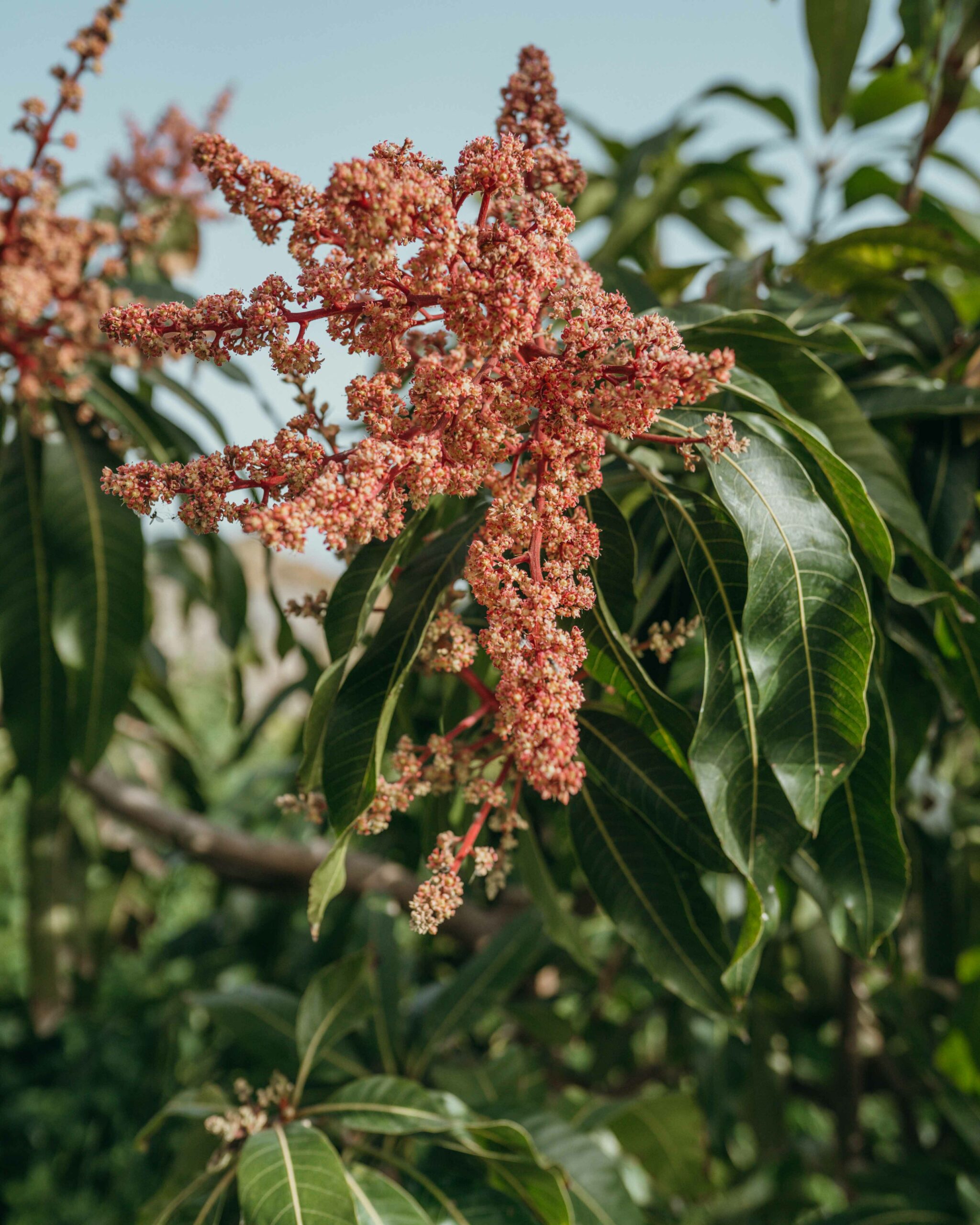Mangifera indica
Mango, Manga
Englische Bezeichnung: Mango, Manga
Spanische Bezeichnung: Mango, Manga

Familie
Sumachgewächse (Anacardiaceae)
Sorten auf der Finca:
-
Keitt
-
Valencia
-
Torbet
-
Lippens
Hauptbestandteile:
Mineralstoffe: Kalium
Vitamine: B-Vitamine, E, C, Beta-Carotin (Provitamin A)
Sekundäre Pflanzenstoffe: Antioxidantien u. Polyphenole (Mangiferin, Catechine, Quercetin, Kaempferol, Anthocyanine) Gallussäure, Ellagsäure, Phytinsäure, Oxalsäure
Ernte-Hinweise:
Kurz vor der Vollreife werden Mangos und Mangas geerntet, sodass sie dann noch nachreifen können und nicht zu reif vom Baum fallen.
Verwendung:
-
Frucht: im Porridge, Obstsalat, Salat, Smoothies, Shake, …
Über Südostasien und China gelangte die Mango schon in der vorchristlichen Zeit bis zu den Philippinen, von wo sie jedoch erst im 16. Jahrhundert von portugiesischen Seefahrern nach Afrika, Brasilien und Europa gebracht wurde. Manche Sorten können bis zu zwei Kilogramm wiegen. Je nach Mangosorte und Reifegrad sind sie saftig weich, meist zart, manchmal auch faserig. Mangas sind größer als Mangos und frei von Fasern.
Family
Sumacaceae (Anacardiaceae)
Varieties on the finca:
-
Keitt
-
Valencia
-
Torbet
-
Lippens
Main ingredients:
Minerals: Potassium
Vitamins: B vitamins, E, C, beta-carotene (provitamin A)
Secondary plant substances: antioxidants and polyphenols (mangiferin, catechins, quercetin, kaempferol, anthocyanins) gallic acid, ellagic acid, phytic acid, oxalic acid
Harvesting tips:
Mangoes and mangas are harvested shortly before they are fully ripe, so that they can then still ripen and do not fall from the tree too ripe.
Use:
-
Fruit: in porridge, fruit salad, salad, smoothies, shake, …
Via Southeast Asia and China, the mango already reached the Philippines in pre-Christian times, from where it was brought to Africa, Brazil and Europe by Portuguese sailors in the 16th century. Some varieties can weigh up to two kilograms. Depending on the mango variety and the degree of ripeness, they are juicy soft, usually tender, sometimes fibrous. Mangas are larger than mangoes and free of fibres.
Familia
Sumacaceae (Anacardiaceae)
Variedades en la finca:
-
Keitt
-
Valencia
-
Torbet
-
Lippens
Componentes principales:
Minerales: Potasio
Vitaminas: Vitaminas del grupo B, E, C, betacaroteno (provitamina A)
Sustancias vegetales secundarias: antioxidantes y polifenoles (mangiferina, catequinas, quercetina, kaempferol, antocianinas) ácido gálico, ácido elágico, ácido fítico, ácido oxálico
Consejos para la cosecha:
Los mangos y las mangas se recolectan poco antes de que estén completamente maduros, para que luego puedan seguir madurando y no caigan del árbol demasiado maduros.
Uso:
-
Fruta: en gachas, macedonias, ensaladas, batidos, …
A través del sudeste asiático y China, el mango ya llegó a Filipinas en la época precristiana, desde donde fue llevado a África, Brasil y Europa por marineros portugueses en el siglo XVI. Algunas variedades pueden pesar hasta dos kilos. Según la variedad de mango y el grado de madurez, son jugosos, suaves, normalmente tiernos, a veces fibrosos. Los mangos son más grandes que los mangos y no tienen fibras.






































